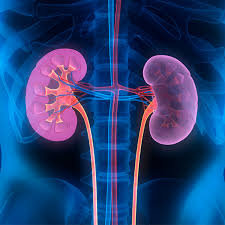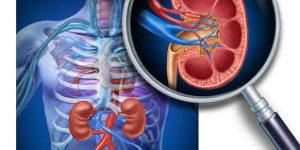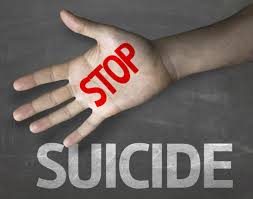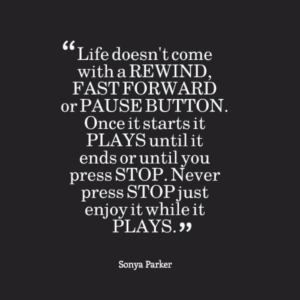9- Kidney Disease
- Deaths: 48,146
- Rate: 15.1
- Age-adjusted rate: 13.2
- Percentage of total deaths: 1.8 percent
Nephritis, nephrotic syndrome, and nephrosis are all conditions, disorders, or diseases of the kidneys.
Chronic kidney disease (CKD) is a condition in which the kidneys are damaged and cannot filter blood as well as healthy kidneys. Because of this, waste from the blood remains in the body and may cause other health problems.
An estimated 10 percent of adults in the U.S. – more than 20 million people – are thought to have CKD to some degree. The chances of developing CKD increase with age, especially after the age of 50, and the condition is most common among adults older than 70.
Awareness and understanding about kidney disease is critically low, with an estimated 26 million Americans having chronic kidney disease. Among those with severe (stage 4) kidney disease, fewer than half realize that they have damaged kidneys.
Chronic kidney disease, also called chronic kidney failure, describes the gradual loss of kidney function. Your kidneys filter wastes and excess fluids from your blood, which are then excreted in your urine. When chronic kidney disease reaches an advanced stage, dangerous levels of fluid, electrolytes and wastes can build up in your body.
In the early stages of chronic kidney disease, you may have few signs or symptoms. Chronic kidney disease may not become apparent until your kidney function is significantly impaired.
Treatment for chronic kidney disease focuses on slowing the progression of the kidney damage, usually by controlling the underlying cause. Chronic kidney disease can progress to end-stage kidney failure, which is fatal without artificial filtering (dialysis) or a kidney transplant.
Signs and symptoms of chronic kidney disease develop over time if kidney damage progresses slowly. Signs and symptoms of kidney disease may include: Nausea/ Vomiting/Loss of appetite/Fatigue and weakness/Sleep problems/Changes in how much you urinate/Decreased mental sharpness/Muscle twitches and cramps/Swelling of feet and ankles/Persistent itching/Chest pain, if fluid builds up around the lining of the heart/Shortness of breath, if fluid builds up in the lungs/High blood pressure (hypertension) that’s difficult to control.
Remember, signs and symptoms of kidney disease are often nonspecific, meaning they can also be caused by other illnesses. Because your kidneys are highly adaptable and able to compensate for lost function, signs and symptoms may not appear until irreversible damage has occurred.
In how to help prevent this condition:
- Lose weight if you are overweight.
- Get active. Physical activity helps control blood sugar levels.
- Quit smoking.
- Getting a checkup? Make sure to get your kidneys checked too.
- Take medications as directed.
- Keep your blood pressure below 140/90, or ask your doctor what the best blood pressure target is for you.
- If you have diabetes, stay in your target blood sugar range as much as possible.
- Stay in your target cholesterol range.
- Eat foods lower in salt.
- Eat more fruits and vegetables.
10. Suicide
Suicide is a Leading Cause of Death in the United States. According to the Centers for Disease Control and Prevention (CDC) WISQARS Leading Causes of Death Reports, in 2016: Suicide was the tenth leading cause of death overall in the United States, claiming the lives of nearly 45,000 people.
Suicide was the second leading cause of death among individuals between the ages of 10 and 34, and the fourth leading cause of death among individuals between the ages of 35 and 54. There were more than twice as many suicides (44,965) in the United States as there were homicides (19,362).
American facts on statistics with suicide in the U.S.:
- The annual age-adjusted suicide rate is 13.42 per 100,000 individuals.
- Men die by suicide 3.53x more often than women.
- On average, there are 123 suicides per day.
- White males accounted for 7 of 10 suicides in 2016.
- Firearms account for 51% of all suicides in 2016.
- The rate of suicide is highest in middle age — white men in particular.
We have a rising toll of suicides in our world today. This is an extremely disturbing fact, the tenth-leading cause of death. The suicide rate has gone up nearly 30% in the past 18 years in the U.S. This is a complicated issue without simple causes or solutions. We have internet bullying. We have loneliness and isolation. We have families in dissolution. We have a preponderance of psychiatric treatments that ignore the heart and soul of what it is to be human. Life is difficult, and requires struggle and resilience and caring to carry on.
There’s no single cause for suicide. Suicide most often occurs when stressors and health issues converge to create an experience of hopelessness and despair. Depression is the most common condition associated with suicide, and it is often undiagnosed or untreated. Conditions like depression, anxiety and substance problems, especially when unaddressed, increase risk for suicide. Yet it’s important to note that most people who actively manage their mental health conditions go on to engage in life.
Something to look out for when concerned that a person may be suicidal is a change in behavior or the presence of entirely new behaviors. This is of sharpest concern if the new or changed behavior is related to a painful event, loss, or change. Most people who take their lives exhibit one or more warning signs, either through what they say or what they do.
What to do if somone appears suicidal:
1- Contact emergency services immediately if someone is about to commit suicide. You need emergency responders, especially first-aid, to be there as soon as humanly possible. If you need to be with someone and they won’t let you call, try to get someone else to call. If someone is on a bridge, holding a weapon, or otherwise threatening their own life, your first move needs to be to 911. You should never try and handle this on your own.
- Mental health professionals, such as therapists or counselors, should be notified as soon as possible.
- If someone is adamant that you don’t call the police, call the National Suicide Hotline at 1-800-273-TALK (8255).
2- Ask them directly if they are thinking of suicide. You will not be “putting the thought inside their heads.” Suicide is everywhere in modern media and news, and mentioning it will not be the spark that makes them decide to take their life. You need to be direct, open, and honest with the person if you want them to be direct with you.
- Ask if they have a specific suicide plan. Is this a recent thought or have they formulated a plan? If they have, do not leave them alone under any circumstances.
3- Listen to their problems instead of trying to fix them. The most important thing you can do to prevent suicide is to just listen to the person’s problems. You do not have the skills or knowledge needed to “fix” someone with suicidal tendencies, so don’t try. Just let them talk about their feelings, their desire to kill themselves, and their issues. Ask simple, kind questions: “What’s wrong?” “Why do you feel like this?” “How long have you been thinking about this?” “Tell me about your thoughts.”
Never argue with someone or try and convince them not to kill themselves. You just need to listen and validate their distress.
Don’t tell someone, “You have so much to live for.” Someone contemplating suicide has already rejected this idea, deciding they don’t have much to live for, and this will only reinforce the thought.
4- Do not leave the person alone. It doesn’t matter how angry or upset they are, a suicidal person cannot be left to themselves, even for a moment. If you cannot physically be with them, make sure there is someone who is. Now is not the time to worry about what they think—your continued presence will often prevent them from doing anything drastic, and they will appreciate your love and care later.
“If you are thinking about suicide pick up the phone and call someone who can help you:
- Crisis Call Center
Phone: (800) 273-8255 - Hopeline Network
Phone: (800) 422-HOPE (1-800-422-4673) - National Runaway Safeline
Phone: (800) RUNAWAY (1-800-786-2929) - National Suicide Prevention Hotline
Phone: (800) 273-TALK (1-800-273-8255) - Befrienders Worldwide
Resources and numbers by states and countries - Boys Town Hotline
Phone: (800) 448-3000 - The Trevor Project
Phone: (866) 488-7386 - Veterans Crisis Line
Phone: (800) 273-8255 Press 1 - The Samaritans
Phone (In the UK and ROI): 116 123



